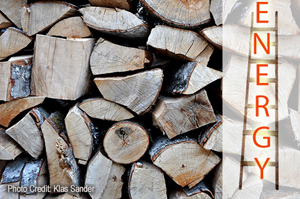Do trends in woodfuel consumption spell disaster for forests?

A blog published today on the World Bank's website highlights two startling trends:
- Woodfuel use went up almost 300% in Germany between 2000 and 2010
- Timber theft is also on the rise. In Greece, the age-old olive tree under which Plato was said to have taught his students was cut down for firewood this winter
The two facts taken together hint toward a reversal in developmental progress: a climb down the so-called energy ladder (which normally leads from traditional to more modern fuels); and a rise in forest crime driven by poverty and a breakdown in the rule of law. But as the blog authors point out, woodfuel is not necessarily a thing of the past and can be part of a modern energy mix -- if produced and used sustainably.
What stands behind that "if"? Are there realistic, reasonably sustainable models out there? And does woodfuel use, projected to keep growing in sub-Saharan Africa in the next 20 years, necessarily spell doom for forests?
Commercial Woodfuel Production, a publication by ESMAP, the Energy Sector Management Assistance Program housed at the World Bank, describes three promising models of commercial forestry that can contribute to the modernization and rationalization of the wood energy sector in developing countries: community-based forest management (CBFM), private woodlots in Sub-Saharan Africa, and forest replacement associations (FRA) in Latin America. The report also provides background information on the importance of woodfuel in developing countries, where firewood and charcoal often account for 50 to 90% of all energy used.
An analysis of deforestation trends in the Congo Basin, supported by PROFOR, suggests the impact of woodfuel consumption on forest cover could be mitigated through a range of no-regrets actions: from putting woodfuel energy higher on the political agenda, to optimizing the fuelwood/charcoal value chain, diversifying supplies, fostering community involvement, and responding to urban needs in terms of both food and energy (through integrated agroforestry models for example). Those steps could help reconcile economic (and demographic) growth with forest protection.








